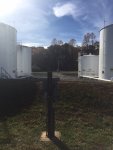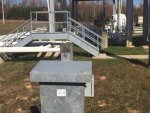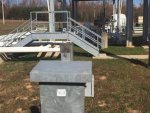fbhwt
Electrical Systems Inspector
- Location
- Spotsylvania,Virginia
- Occupation
- Electrical Systems Inspector
Has anyone here installed Cathodic Protection Systems in locations such as above ground fuel (gasoline, diesel, JP-8) storage tanks? I have come across a system that is installed in an area surrounded by 20,000gal tanks and above and below ground piping. There is a 2 pole 60 amp outdoor rated disconnect feeding a rectifier, neither enclosure is class 1 rated.





